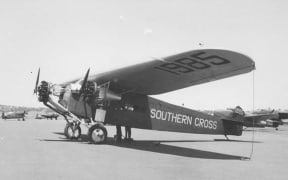The splutter of the Avro 504k bi-plane was less heart-stopping 100 years ago than it was the sound of progress.
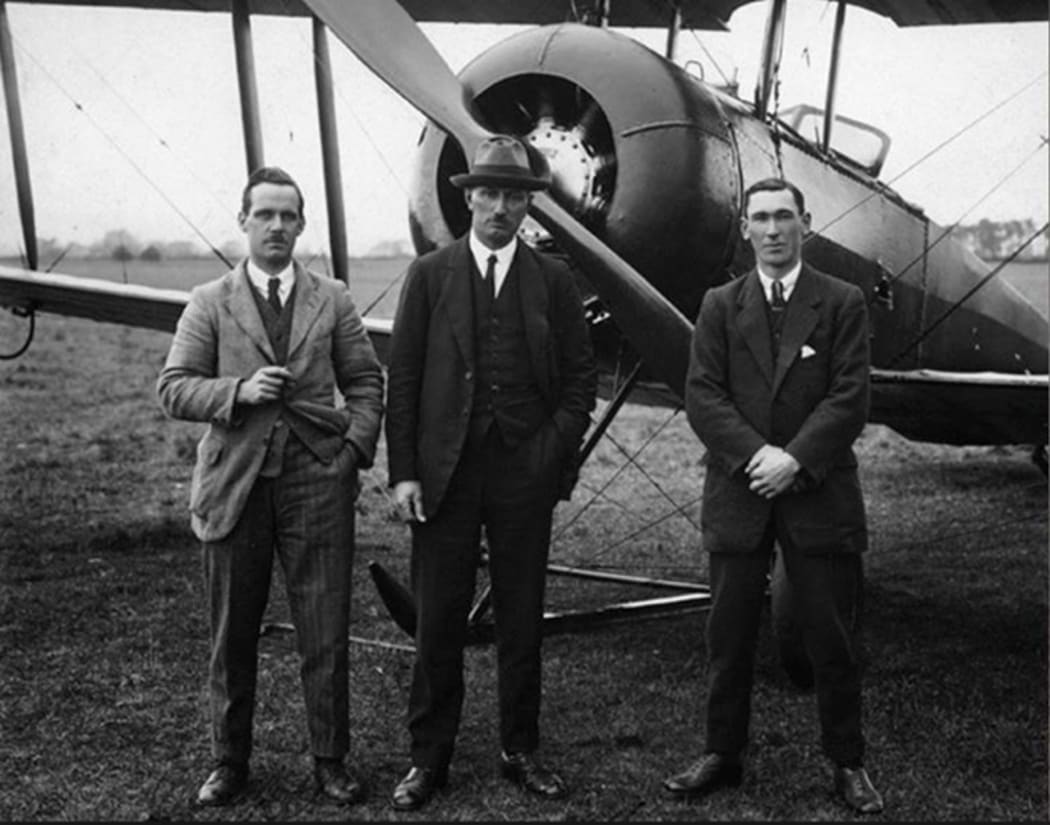
Photo: Supplied/ Marlborough Museum Archives
On 25 August 1920, British-born World War I flying ace Captain Euan Dickson took off from Sockburn in Christchurch at 7am, bound for Trentham just outside Wellington - it would be the first air crossing of the Cook Strait.
On board with him were mechanic JE Moore and the aviation company's deputy chief, CH Hewlett - plus a pile of what became the country's first air mail.
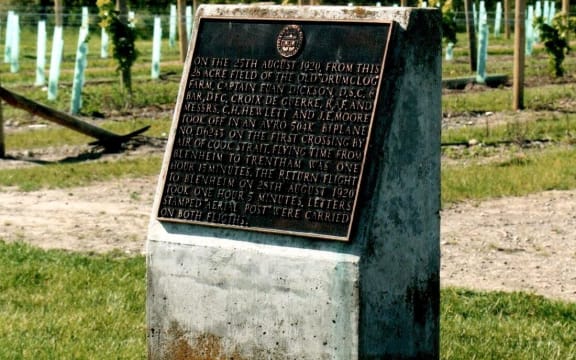
This commemorative plaque marks the site of the departure for the first crossing of Cook Strait by air. Photo: Marlborough Museum Archives
The Canterbury Aviation Company's successful mission was a major milestone in New Zealand aviation.
The journey took a total of seven hours, including stops in Kaikōura and Blenheim.
The centennial was marked today with tea and scones at the Marlborough Aero Club in Omaka, which also hosted a special re-enactment flight.
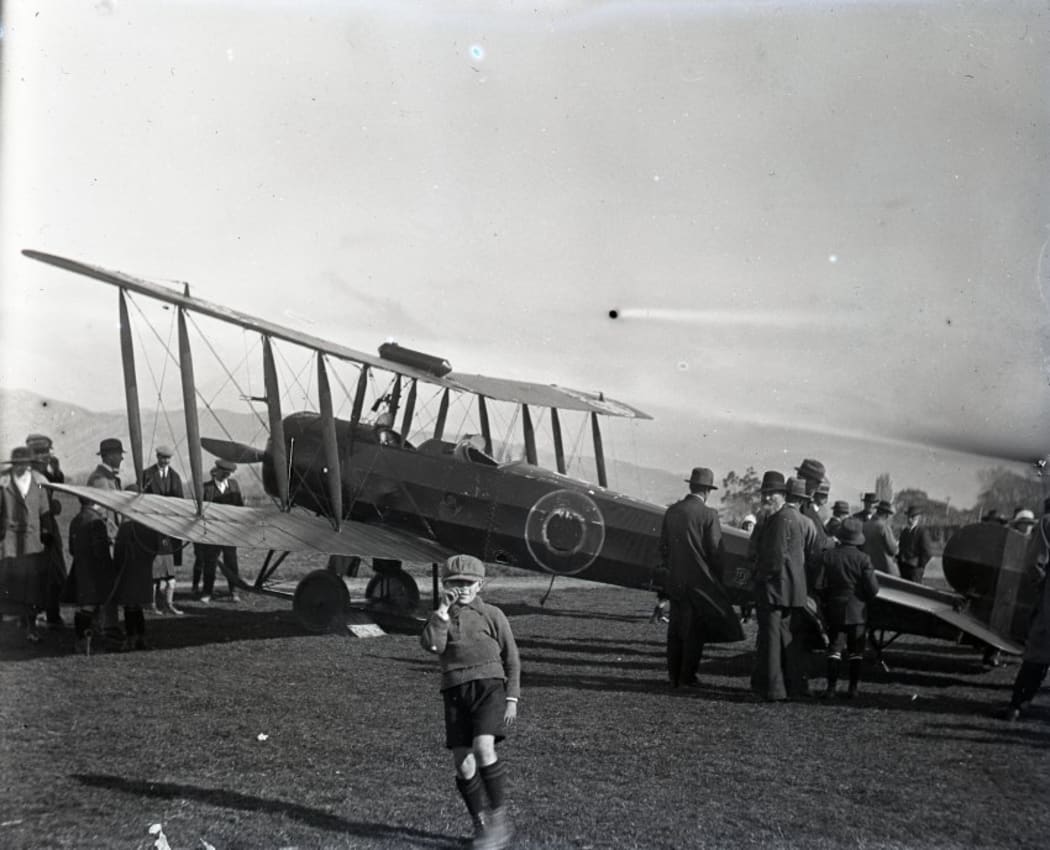
Photo: Supplied / Marlborough Museum Archives
Captain Dickson's flight 100 years ago landed in Kaikōura just over two hours after take-off.
His radio chatter was reported later by The Evening Post:
"Left Christchurch in adverse conditions. Very strong north-easter. Made bad time to Kaikōura when petrol was running short."
He landed safely, but a few miles short of the arranged landing area.
"Landed on a rather rough paddock, and managed to get some motor spirit from Mr Bullen, The Elms: cup of tea, too ..."
Refreshed from their cuppa, the Avro and its crew arrived in a paddock near Blenheim just before midday.
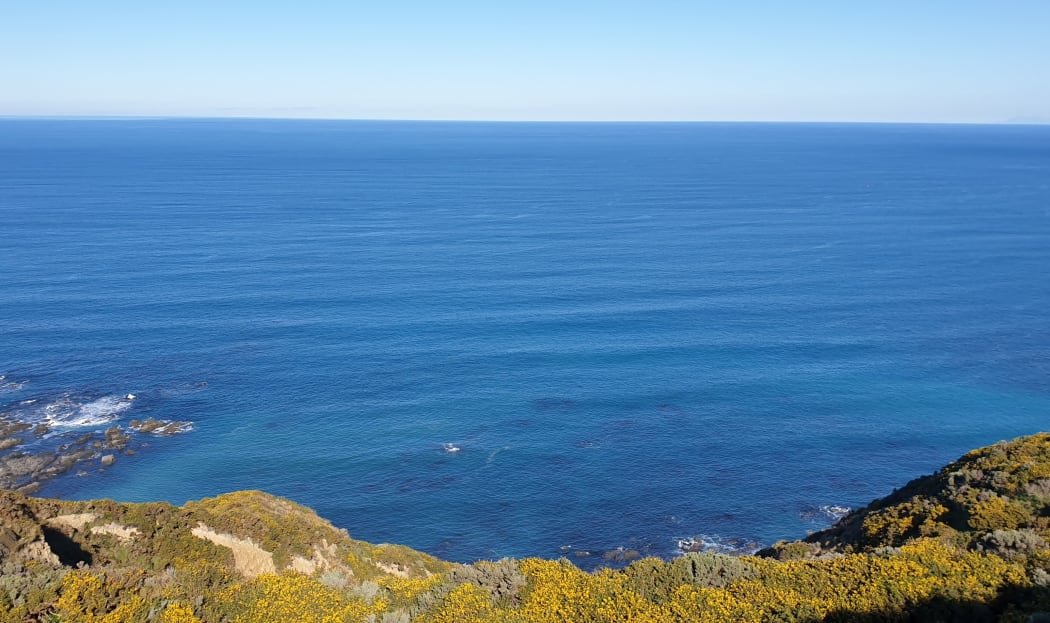
Cook Strait Photo: RNZ / Tracy Neal
The landing site at Drumclog Farm in Dillons Point Road was today a maze of vineyards, posts and wires, but a commemorative plaque marked the spot, John Sinclair of the Marlborough Aviation History working group said.
"That's where he ... Captain Euan Dickson, when he came through, that's where he re-fuelled."
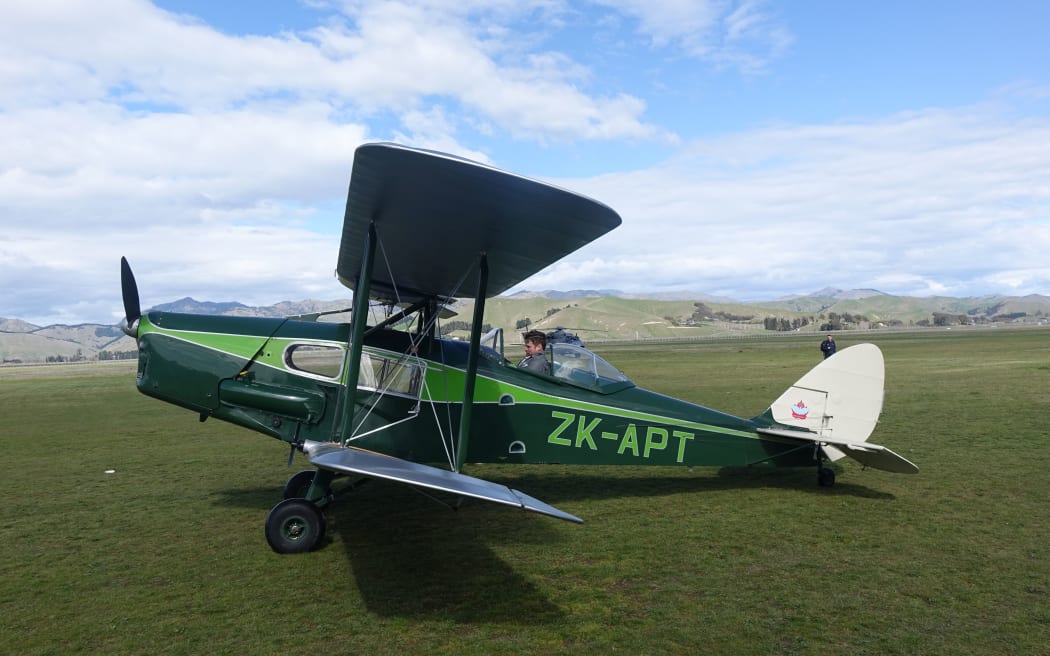
Photo: RNZ / Tracy Neal
Today's re-enactment flight was in a Fox Moth bi-plane, about 20 years the Avro's junior.
Pilot Aaron Patchett landed it safely in Omaka, about three and a half hours after leaving Christchurch, and by all accounts it was a smoother journey than 100 years before.
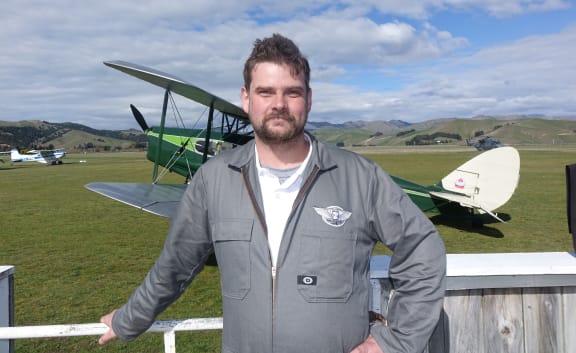
Aaron Patchett Photo: RNZ / Tracy Neal
"It was a lot easier for us, put it that way. I mean this aeroplane is about 20 years newer and is enclosed.
"It's still hard work for us but a lot easier than what they had, so it makes you appreciate what they did back then really."
Pip Hally is the CEO of PMH Aviation, and co-owner of the Fox Moth.
She said it held a special place in the heart of Marlborough's rich aviation history.
"It's unfortunately not the Avro 504 that did the flight 100 years ago - we don't have one we can use in New Zealand.
"But the Fox Moth was bought new by the Marlborough Aero Club in 1947, so she's come home to Marlborough and is here to stay.
"She's very significant to the club and to the region."
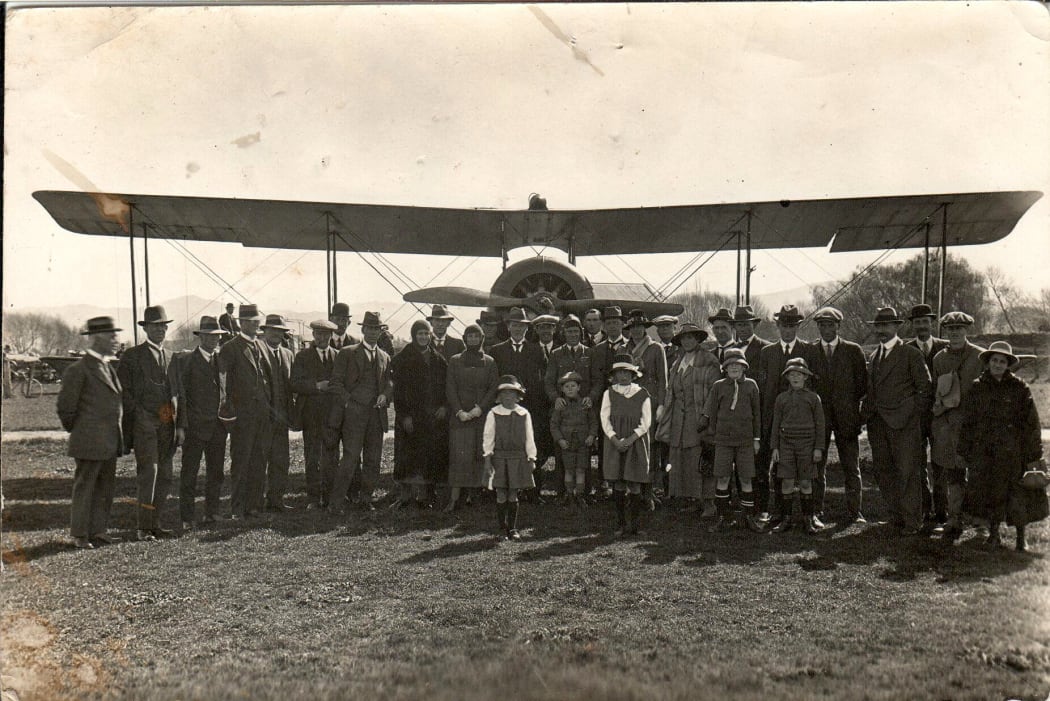
Photo: Supplied / Marlborough Museum Archives
Christchurch academic Dr Richard Holdaway helped to organise today's re-enactment.
It was special for a number of reasons but mainly this:
"My father and his twin brother actually saw Dickson arrive in Blenheim, when he was a lad.
"Later on in his life we were able to show him Concord flying in and out of Christchurch so ... the history of aviation in one lifetime."
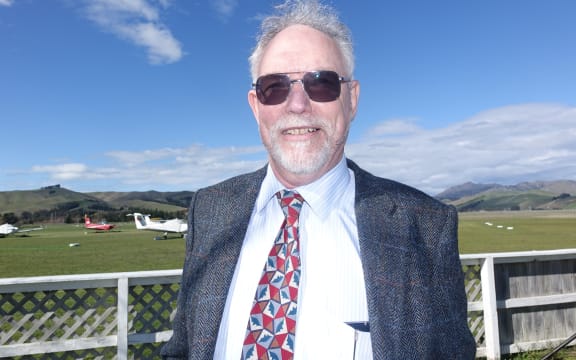
Richard Holdaway Photo: RNZ / Tracy Neal
The century-old attempt on Cook Strait began just before 1pm.
Dickson recorded the flight in his logbook, which is now in the collection of the Air Force Museum of New Zealand:
"... followed coast to Arapawa Island and then across - only incident being cloud flying for about 10-15 minutes at 6000 feet. Landed at Trentham Racecourse at 2.10pm."
The feat was important because it linked the two islands in what aviation enthusiasts describe as a golden era of flight, globally.
Holdaway said it was also a time when the world was just emerging from a very bleak few years.
"Aviation itself was barely 17 years old. The first flight in New Zealand had happened only nine years before and we took it on really quickly.
"And then the Great War took place and Dickson was a hero in that.
"Then come peacetime, we had the Spanish Flu which killed millions."
The Avro crossed the Strait at 6000 feet, arriving in Trentham, unannounced. A few days later, Avro returned to Marlborough.
John Sinclair said it was another fine moment in the region's history.
"When he came back - 'cos he was stuck in Wellington with weather for three days - when he came back to Marlborough he stayed there for another five days doing joy rides at a shilling each."
In that time he made nearly 100 flights and carried 166 passengers - and, of course, did a bit of stunt flying as well.

